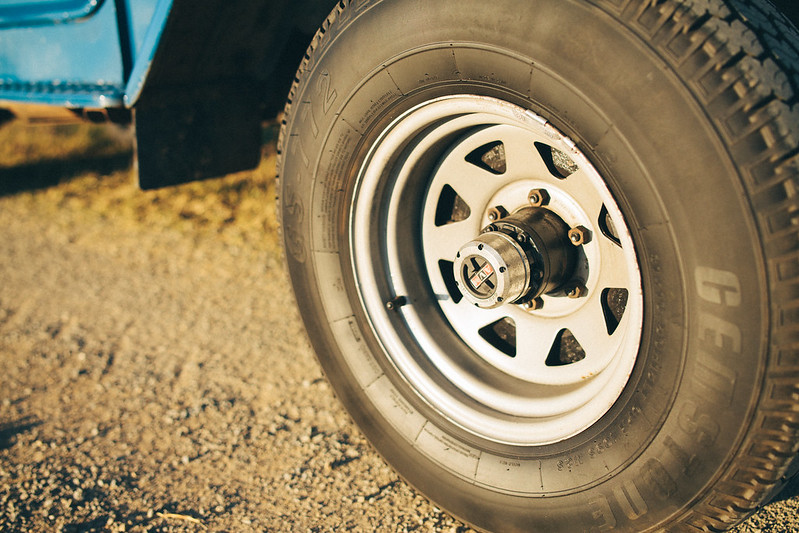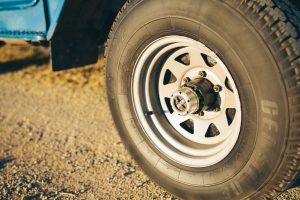
One could argue all day about the most important part of a car, but the tires are certainly near the top of this list. Equipping your vehicle with the right tires at the appropriate pressure not only ensures your safety but offers a good driving experience and saves you from excessive maintenance and repair costs. You probably don’t think about your tire pressure until the warning light comes on in your car, so consider educating yourself through this guide. Dublin Toyota is here to give you all the tire pressure information you need to be a responsible vehicle owner.
What Is Tire Pressure?

Tire pressure describes the amount of force that the air inside of your car’s tires creates. It essentially measures how inflated the tires are using the pounds per square inch (PSI) metric. Owners maintain their tire pressure according to manufacturer recommendations, though pressure can fluctuate based on factors like changing temperatures. Proper tire inflation reduces accelerated wear, ensuring you can safely drive on the road and use your tires for as long as possible before getting replacements.
Recommended Tire Pressure for Toyotas
Now that you understand the importance of properly inflating your tires, you might wonder what the ideal psi is for your Toyota. Passenger Toyota cars usually recommend between 32 psi to 35 psi, but ensure you know the correct psi for your specific model. Newer cars usually have a sticker on the inside of the driver’s door that lists the recommended tire pressure. If your driver’s door doesn’t have a sticker, consult the owner’s manual or online resources. Here are some example tire pressures according to their owner’s manuals:
- Toyota RAV4 tire pressure: The 2022 Toyota RAV4 calls for a maximum of 35 psi for the front and rear tires.
- Toyota Camry tire pressure: The 2022 Toyota Camry has a maximum pressure of 35 psi for the front and rear tires.
- Toyota Corolla tire pressure: The recommended psi for the 2022 Toyota Corolla is 38 psi for the front tires and 36 for the rear tires.
What Tire Sizes Mean
Aside from properly inflating your tires, ensure you equip your vehicle with properly sized tires. Tires meant for your car give you a better handling experience, improve fuel economy, and prevent alignment issues. They also improve traction and braking, make it easier to change directions, absorb road shocks, and support the weight of your vehicle. Whether you’re getting new tires for your car or considering available options for a new vehicle, you might notice that tires have strings of numbers and letters on their sidewalls.
The letter at the very beginning of this string tells you what type of vehicle the tire is compatible with. “P” is common and indicates that the tire is for passenger vehicles. There’s also “LT,” which indicates that the tire is for light trucks. If the string has no letters at the beginning, it’s a Euro-Metric tire that might have different load capacities than a P-Metric tire. The first three letters in the string indicate the width of the tire from sidewall to sidewall in millimeters.
For instance, a P215/65 R15 tire has a width of 215 millimeters. After the slash mark in the string is a number that indicates the ratio of the height of the tire’s cross-section to its width. For a P215/65 R15 tire, the 65 aspect ratio means that the height is equal to 65% of the tire’s width. The letter after the aspect ratio reveals the tire’s construction type. For instance, “R” stands for Radial and indicates that the layers run radially. The final number indicates the wheel’s diameter in inches.
Recommended Tires for Toyotas
The recommended tires for Toyotas depend on what year and model you have. You can choose the standard tires that come with the purchase of a new vehicle or opt for available options. Here are some examples of recommended tires for Toyota models:
- Best tires for a Toyota Camry: The 2021 Toyota Camry Hybrid LE has a smaller tire size of 205/65R16 compared to other models that boast sizes like 235/45R18.
- Best tires for a Toyota Highlander: A 2013 Toyota Highlander Hybrid has two recommended tire sizes: 245/65R17 and 245/55R19. If you opt for a 2021 model, you can choose between a 235/65R18 or 235/55R20 size depending on the trim.
- Best tires for a Toyota Tacoma: As a midsize pickup truck, the 2021 Toyota Tacoma has tire sizes as large as 265/70R16.
- Best tires for a Toyota Corolla: The smaller 2021 Toyota Corolla trims have a 195/65R15 tire size, while other trims feature a 225/40R18 tire size.
How To Check Tire Pressure on the Toyota App
Even if you have the right tires and inflate them properly, the tire pressure light for your Toyota might start to flash. Tire pressure can change because of conditions ranging from the weather to road bumps. You can check your tire pressure manually, but consider taking advantage of the Toyota app. This innovative technology makes it easy to view the psi from your smartphone and fill up (or deflate) if needed. Here’s how to use the app if your Toyota tire pressure light comes on:
- Download the app.
- Complete the registration process.
- Select “My Garage.”
- Select “Maintenance.”
- View the readout for your tire pressure.
How To Reset Your Tire Pressure Light
Filling your tires to the appropriate psi should cause the warning light to turn off, but it might remain on. The instructions for resetting your tire pressure light may vary depending on your vehicle’s model, but here’s how to reset the tire pressure light on a Toyota Corolla:
- Drive at or above 50 miles per hour for 10 minutes.
- Turn off the vehicle, then turn the key to the “On” position without starting the engine.
- Hold the TPMS reset button until the light blinks three times, then release it.
- Start the car and give the sensor 20 minutes to refresh.
Does ToyotaCare Cover Tires?
Whether you need maintenance for your tires for a Toyota Corolla, Tacoma, or Highlander, know that ToyotaCare covers tire rotations for the first two years or 25,000 miles. This no-cost maintenance plan comes with your purchase of a new Toyota.
We hope this guide gives you a better understanding of tire pressure, tire sizes, and everything in between. If you have questions about your vehicle’s tires, be sure to contact Dublin Toyota today. We also provide maintenance services to keep your tires in excellent shape.





